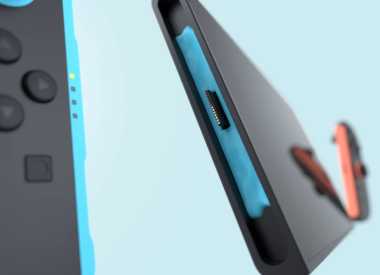A connected home can mean your A/C turns off when someone leaves the front door open, light turns on when you walk into the room, being able to set a timer in the kitchen while your hands are occupied and much more. These conveniences work because of a backend framework that allows the devices to communicate with each other, but this means privacy and security issues persist.
“We heard concerns like ‘well what about my now connected oven? Can somebody turn my oven on and light my house on fire,’” Open Connectivity Foundation marketing and communications chair Kimberly Lewis told iDigitalTimes. “It makes people nervous because they don’t know. Especially in the news lately it’s all about your credit cards and Target and all of those places they felt comfortable shopping at before. Things seem risky. ‘Now you’re gonna tell me my light bulb (is connected)? Everything around me is going to have a sensor in it somewhere, oh my God.’
“I don’t know that we’ve got the answer yet,” Lewis, who is also a communications chair and marketing program manager at Intel, continued, “but I know we’ve got a lot of smart security people from a lot of companies working on, and debating, on how much security does each device need.”
iDigitalTimes sat down with the OCF, formerly called Open Interconnect Foundation, at Mobile World Congress in Barcelona to discuss privacy and security issues related to the Internet of Things (IOC).
OCF Executive Director Michael Richmond said it’s tricky setting a standardization of security protocols when not every device has the same security needs. Does a light bulb need the exact requirement as a heart monitor or your smartphone?
“With security, there’s a tradeoff between absolute security and ease of use and security and connectivity,” Richmond said. “You really have to start at the application and use case to know what level of security is needed.”
For example, he said there are sensors that can be placed under your water heater, dishwasher, toilets, etc that can notify you when a leak occurs. Richmond said that is the type of information as fast as humanly possibly, regardless of privacy/security.
“I don’t care about that getting hacked, I just don’t,” Richmond said. “Because there’s nothing of value there worth stealing. I may want that to connect directly to the cloud without anything getting in the way of that message. Call me no matter where I am."
Richmond's organization, The OCF, is trying to build a framework and protocols with technology companies that connect codes, radios, APIs and the necessary tools so that devices can become connected and part of the IoT.
“We’re putting in the plumbing to allow the devices to connect,” Lewis said. “It’s not sexy (to talk about the bank end of IoT), but it’s a necessary thing to enable what the vision of what IoT is suppose to be.”
“We’re taking the protocols that have built the Internet and saying when you apply that to devices, what do you need to do to make it fit,” Richmond told iDigi.
Richmond said there is a lot of work to be done by all those involved, manufacturers, technology companies and the OCF, to ensure security of connected devices but that most security concerns with IoT aren’t really issues at all.
IoT Applications Are More Than Just At Home
OCF was demoing how native and non-native devices work in a connected word, specifically in the home. There's a thermostat and light bulb that can turn on when you enter a room. If you press another button to leave the home, all of the lights and TVs automatically can turn off… It can be much more fun things, like a connected keg that knows just how much beer to pour based on the glass size you are using.
Gary Martz, a product line director at Intel, said while IoT is generally associated with smart homes and personal device, some of the bigger applications will come in the industrial and commercial field.
“It’s crazy how much money can be saved,” by insurance companies when homes have sensors in place that can detect a broken window, A/C issues or a pipe leak. Even connecting the maintenance of an airplane, he said, could revolutionize the industry.
“Billions of dollars can saved annually by having the proper sensors on an aircraft engine so that the maintenance is that much more predictable,” Martz told iDigitalTimes. “So you don’t have a $100 million asset parked in a hangar in Fargo, North Dakota because that’s where it broke and you have to fly in the parts, equipment and the technician and it’s down for a week and a half.
“If you have the stresses on that engine, usage on that engine, the operating environment on that engine. you can predict when these failures are going to happen. Your maintenance can be planned,” Martz continued. “Billions of dollars a year (can be saved) on this singular use case.”
The future of IoT applications is one Lewis is eager to see but doesn’t know what to expect.
“I’m excited about what I don’t know. The uses cases we haven’t even thought about yet,” Lewis said. “I imagine there’s going to be some really cool things that creative people (will) think of when they got these tools at their hands.”

















